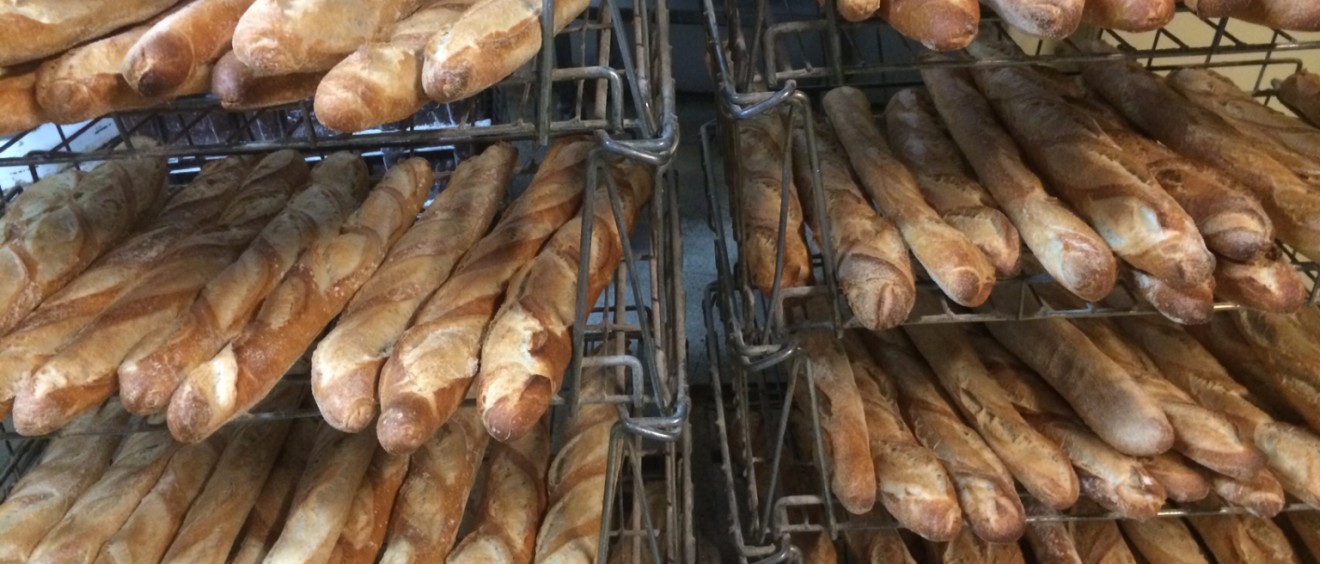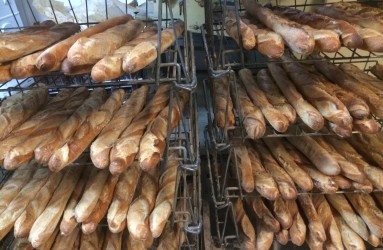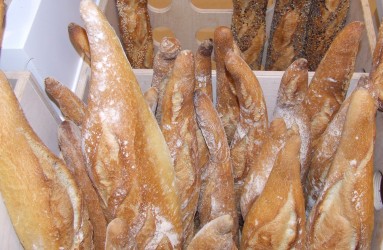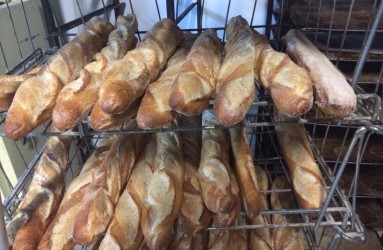
The French Baguette
The ‘baguette’ is considered one of the iconic symbols of French culture. A traditional baguette is made with wheat flour, water, yeast and salt, and consists of a crisp crust filled with a soft, fluffy centre.
Like Italy, France has a strong history in bread. Long wide loaves of bread have been around since the time of Louis XIV, and thin ones since the mid-18th century. It’s increasing availability was due to the cheapness of wheat during the 19th century. This meant that white bread was no longer exclusively for the rich.
The first steam oven was brought to the city of Paris in the early 19th century by an Austrian office. This was also when the the croissant was introduced. With the use of deck and steam ovens, loaves could be baked to produce a crisp crust and white airy centre. Deck/steam ovens are a combination of a gas-fired traditional oven and brick oven, a thick ‘deck’ of stone or firebrick heated by natural gas instead of wood.
In 1920, a law passed that prevented french workers to start work from 4.00am. This made it impossible for bakers to get the bread cooked in time for customers’ breakfast. The solution was… to make bread into long thin forms, allowing them to cook faster – and just in time for breakfast!
Interesting Facts about the French Baguette
- The baguette was not labelled the ‘baguette’ until the 1920s. Stemming from the latin word baculum which became baccheto (Italian) meaning staff or stick.
- The average French man eats a half a baguette a day, compared with almost a whole baguette in 1970 and more than three in 1900.
- National law dictates that ‘French’ bread should contain only flour, yeast, salt and water.
- Baguettes are now widely eaten as sandwiches. Cut a baguette in half then slice each half along the middle. The bread is versatile enough to be sweet or savoury and can be eaten for breakfast, lunch and dinner.
- March 21st is National French Bread Day.
- According to a legend, it was Napoleon who asked for the baguette to have a long shape. This made it easier for his soldiers to carry their bread around down their pants while in the battlefield.
- In 2013, a Parisian baker installed the first vending machine for baguettes, available 24/7!
There are ways of telling the difference between a artisan produced baguette and one from a supermarket… Many feel the loaf will smell much more strongly of bread, the crust tends to be darker and richer and the interior is usually a cream colour rather that pure white.
So while you enjoy the memorable taste, texture and sight of the beloved french baguette – take a bite and think about the long history this magic baton has created since its beginnings!
Are you a cafe, venue or restaurant looking for a local supplier of fresh baked ciabatta, sourdough and other artisan breads? Dolce Forno delivers freshly baked artisan breads and pastries within Hertfordshire, St Albans, Surrey, Berkshire, London and Buckinghamshire.
Contact us today to arrange a FREE sample tray of our artisan breads or pastries. Call our team at Dolce Forno Breads on 01727 762 456 or alternatively email contact@dolceforno.co.uk to find out more.



